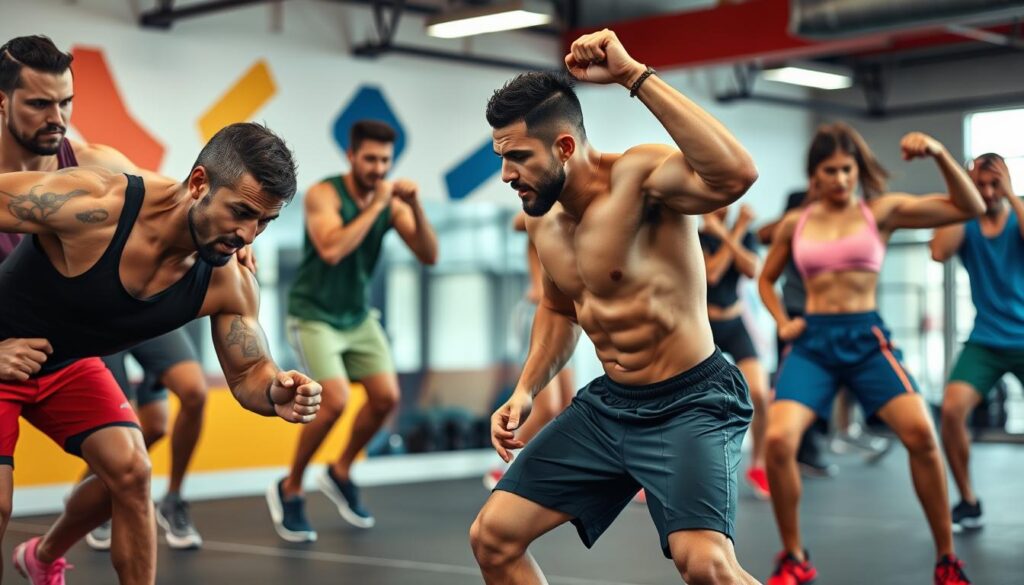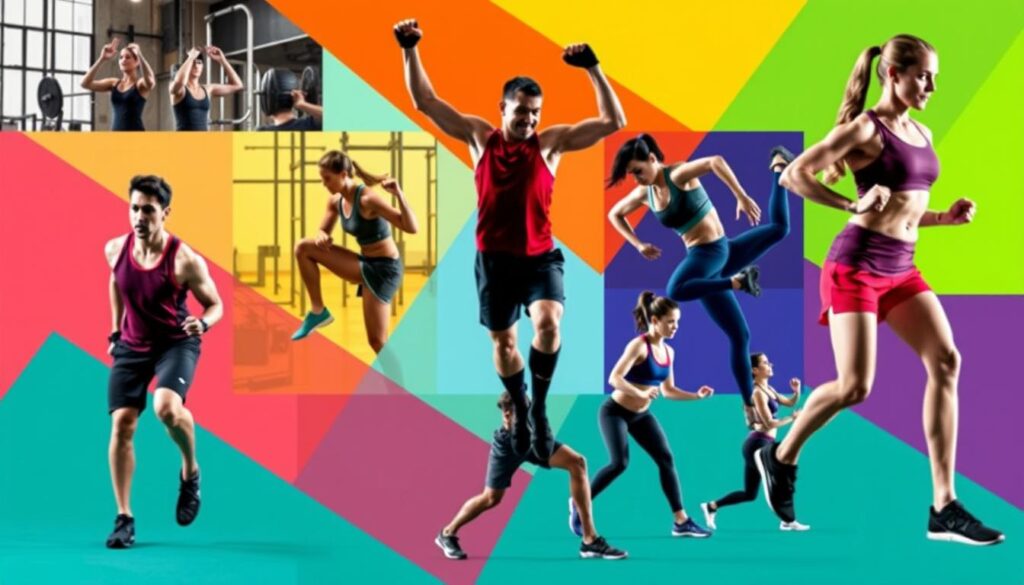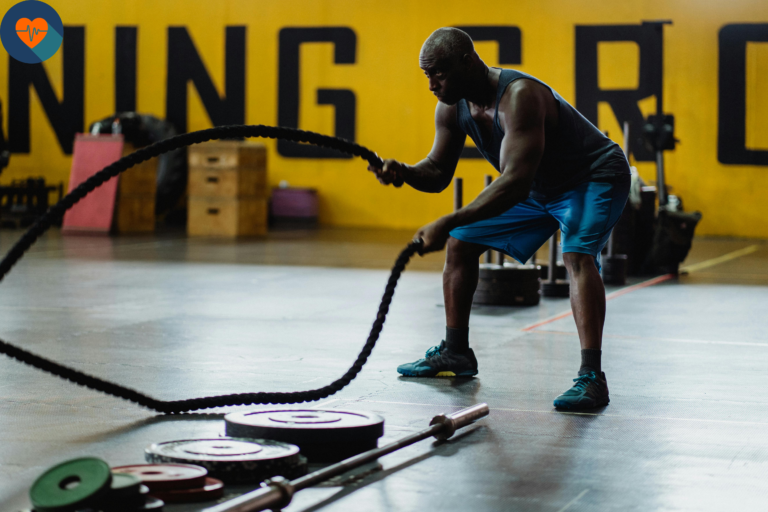Table of Contents
Are you looking to unleash your athletic potential and give your all in sports?Then, you’ve been looking for this guide on sports conditioning. Whether you are a competitive athlete, an enthusiast of all things sporting, or someone who wants to get in shape, you will know how your body and mind can work together for great success.

Conditioned sports are integral to opening up the full depth of your athletic ability and reducing the chances of injury.But what does it mean, and how does one use it to their advantage? So, let’s delve into sports conditioning to learn precisely how to achieve your fitness goals.
What is Sports Conditioning?
Sports conditioning is a Process professional athletes use to prepare for their respective sports. It enhances the physical, mental, and technical aspects of the sport. Training in sports is considered crucial for success.
Definition and Importance
Sports conditioning enhances an athlete’s standard by developing physical and mental characteristics. It forms an integral part of every athlete’s schedule. It increases muscle strength, as well as the level of agility and ability to perform in a particular sport.
Critical Components of Sports Conditioning
The essential constituents involved in sports conditioning are:
- Training to increase muscular power and overall strength of the body
- Cardiovascular fitness to develop aerobic and anaerobic fitness
- Flexibility to increase range of motion and minimize the likelihood of injury
- Agility to improve quickness, coordination, and change of direction
- Speed development to enhance acceleration and top-end speed
- Sport-specific skills development to perfect your technique
By making equal importance to these, the athletes can bring out their full potential. They can perform at their maximum.
Benefits of Proper Sports Conditioning
It has enabled athletes to enter sports conditioning. It improves one’s physical fitness, strength, and endurance. Thus, one can run faster, jump higher, and last longer in his sport. This also helps prevent injuries because the muscles become more robust and flexible.
Better Performance
Sports conditioning makes one a better sportsperson. It gives strength, power, and endurance. With this, you are in a position to do more and do it better, such as running faster or jumping higher.
Reduced Chances of Injury
It’s not only pleasing but also prevents injuries. Strengthening your muscles, tendons, and joints puts you in an excellent position to take in the demands of your sport. That minimizes your chances of injury. Thirdly, better flexibility and correct movement prevent injuries.

Benefits of Sports Conditioning Description
- Improved Athletic Performance: Fitness, strength, and endurance have improved, thus offering great returns in sports and activities.
- Injury Prevention: Strengthening muscles, improving flexibility, and developing better movement patterns reduce the risk of injuries.
Principles of Sports Conditioning
Effective sports conditioning relies upon a set of principles. They include specificity, progressive overload, recovery, and adaptation. They also include individualization and periodization. When you follow these principles of sports conditioning, your training program will match your sport’s needs. This brings about improved athletic performance over time.
The principle of specificity suggests that training should focus on the demand of a particular sport.
It focuses on the muscles and movements needed to be at the top. Progressive overload seeks to increase the intensity of training progressively to stress the body toward adaptation continually.
Recovery and adaptation are essential for ensuring that rest is provided in ample time so one can adapt to training without overtraining.
Individualization refers to training based on one’s physique and potential.
Last but not least, periodization organizes training into focused periods.
This optimizes performance during crucial competitions. Integrate these principles of sports conditioning into your evidence-based sports conditioning program for maximum effectiveness.
Principles for Measuring Your Fitness Level
Knowing your current fitness level before initiating any kind of sports conditioning program is essential. That means you must perform a series of sports conditioning fitness assessment tests. These tests will help to ascertain your strengths, weaknesses, and what to work on. That way, setting realistic goals for your sports conditioning will be easy.
Baseline Testing and Evaluation
It involves doing baseline testing for an athlete, covering your strength, endurance, speed, agility, and much more. This will indicate where you stand now through those baseline tests. It will make you begin on the right foot in your sports conditioning program.
Setting Realistic Goals
You can set realistic goals for your program based on baseline test results. Your objectives should be specific, measurable, achievable, relevant, and time-bound, often referred to as the SMART criteria.
Well-defined goals give you a mapping device to gauge progress, stay motivated, and ensure that efforts and processes match objectives.
Remember, a good sports conditioning program is multi-dimensional. Once you have gauged your fitness profile and set realistic goals, you are well on your way to a journey for better performance in sports and injury prevention.
Approaching Comprehensive Sports Conditioning Program Design
Sports conditioning program design is all-important to elicit top performance from athletes. It integrates many training methodologies and principles, from physical and physiological to technical, depending on your sport.
Any effective sports conditioning program should start with a sound, evidence-based plan.
It includes strength and power training along with proper cardio, sport-specific skills, and flexibility exercises in a balanced format. Balance is critical to good overall conditioning.
- Check your fitness level and set realistic goals for the sports conditioning program.
- Use different forms of resistance training to improve muscle strength and power.
- Do cardio and endurance training to enhance aerobic and anaerobic fitness.
- Include specific drills and exercises for your sport to enhance skills and agility.
- Ensure flexibility and mobility to increase the range of motion and prevent injury.
- Add nutrition and recovery strategies to help with training and performance improvement.
By effectively planning your general sports conditioning training program, you enable it to be prepared for all key aspects that ensure maximum performance. Such an approach increases your potential to maximize your potential while reducing the risk of picking up injuries. It builds a foundation for success in your sport over the long term.
Strength and Power Training
Building strength and power is fundamental for elite athletic performance. Specific exercises will be included that will increase the athlete’s muscle strength and explosiveness. For this very reason, these particular exercises will be required to be successful in your sport.
Resistance Training Exercises
Resistance training remains indispensable in any sports conditioning program. Squats, deadlifts, bench presses, and overhead presses are very good training for strength in sports and power development for athletes. These exercises work on many muscles simultaneously, boosting your overall strength and power.
Plyometric Drills
The most critical plyometric exercises for developing power in athletes include box jumps and burpees. These are the kinds of exercises that emphasize rapid, dynamic movements. With these plyometric drills and all the previously discussed resistance training exercises, you will have a more significant and undoubtedly different advantage in your sport.
| Resistance Training Exercises | Plyometric Drills |
| Squats | Box Jumps |
| Deadlifts | Burpees |
| Bench Press | Medicine Ball Throws |
| Overhead Press | Plyo Push-ups |
Resistance Training Exercises Plyometric Drills
Adding resistance training and plyometric drills into your program will allow you to strengthen and enhance power and explosiveness to dominate the game and improve your performance.
Endurance and Cardiovascular Training
One of the critical components of a sports conditioning program is endurance and cardiovascular training. Cardio exercises increase your aerobic capacity. It enables you to be out in your sport longer, going at a more intense pace.
One can apply These added benefits of endurance training to a workout. It develops cardiovascular fitness for long events, increases oxygen utilization and blood flow, and aids recovery between intense workouts.
- Improve your aerobic capacity and stamina.
- Increase cardiovascular fitness and endurance.
- Allow your body to maintain high-intensity exertion for longer.
- Improve oxygen use and delivery.
- Let your body recover faster between intense workouts.
With cardiovascular and endurance-forming activities incorporated into your training, your athletic performance will improve, and you will have many chances of success in the sport.
Sport Conditioning
Effective sports conditioning is about more than maintaining fitness levels. Instead, it is sport-specific drills and exercises tailored to the demands of the particular sport. The muscle memory, coordination, and agility you build with these exercises can improve optimal performance.
Sport-Specific Drills and Exercises
Integrating sport-specific conditioning into one’s routine prepares the body for the demands placed by one’s particular sport. Individuals will go through the specific techniques within a sport, including the footwork, using their decision-making skills.
Typical focus areas in basketball include dribbling, shooting, and agility drills. Soccer players could focus on ball control, passing, and explosive sprints. Swimmers might focus on stroke-specific drills and some form of resistance exercises for the upper body.
Agility and Coordination Development
Agility training for athletes and coordination enhancement are part of sports conditioning. Both skills enable one to move faster, change direction, and quickly react to various demands of one’s sport.
| Exercise | Benefits |
| Ladder Drills | Improve the feet’ speed, coordination, and agility. |
| Cone Drills | Improve change of direction and spatial awareness. |
| Plyometric Exercises | Develop explosive power and neuromuscular coordination |
By adding sport-specific conditioning, agility training, and coordination development to your routine, you can reach your athletic peak. You’ll perform at your best in your chosen sport.
Flexibility and Mobility Training
Maintaining the body flexible and mobile for athletes and fitness individuals is essential. Adding stretches and myofascial release to your workout may improve your movement, lower the incidence of injuries, and generally enhance your sports performance.
Stretching Techniques
The training program is complete with stretches, no matter what sport. This will make you more flexible, increase your range of joints, and contribute to muscle recovery processes. Vary your stretches, such as static, dynamic, and PNF stretches, that target the muscle variation for flexibility.
- Static: Each time spent holding a stretch should be 15-30 seconds to lengthen muscles gradually.
- Dynamic: Stretching that involves controlled movements that improve flexibility and joint stability.
- PNF (Proprioceptive Neuromuscular Facilitation): A more advanced stretching technique that involves a partner and can lead to great improvements.
Here’s a revised version of your text with the table formatted correctly:
Myofascial Release and Foam Rolling
Myofascial release is another technique, like foam rolling, that can improve flexibility in sports conditioning, enhance athletes’ mobility training, and aid in muscle recovery. Using a foam roller or similar gadget, you can target trigger points to release tension within your muscles. This helps enhance your movements and reduces the risk of injuries.
| Muscle Group | Foam Rolling Technique |
|---|---|
| Quadriceps | Slowly roll forward on the front of the thigh, moving up and down, stopping on any areas of tenderness. |
| Hamstrings | Sit on the roller and gently roll from the back of the thigh down to the knee. |
| Calves | Place the roller under your calf and roll from ankle to knee. |
Incorporating stretching methods and myofascial release in sports training will increase flexibility and mobility, enhancing athletic performance and reducing the likelihood of injury.
Nutrition and Recovery Strategies
Proper nutrition and recovery must complement your sports conditioning program. The training itself builds muscle and fitness, but recovery enables athletes to bounce back stronger. A nutrition plan should focus on whole foods to meet the requirements of the athlete’s training and recovery goals.
Fueling Your Body
Food should be seen as fuel, and the right amounts of macronutrients (carbohydrates, proteins, and fats) should be consumed. Nutritional strategies include pre- and post-workout nutrition, which is essential for recovering quickly and allowing the muscles to repair.
For example:
- Carbohydrates provide energy during workouts.
- Proteins help with muscle repair and growth.
- Healthy fats are crucial for hormone production and recovery.
Active Recovery and Rest
Active recovery techniques, such as light exercises and stretching, are vital for helping the body adapt to training. These methods not only prevent overtraining but also reduce the risk of injury.
Light Exercises
Engaging in light exercises like walking, swimming, and cycling enhances blood circulation and promotes recovery. These activities keep the body moving without putting undue stress on the muscles.
Stretching and Mobility
Incorporating stretching and mobility exercises increases flexibility and the range of motion, which aids muscle recovery. This can include static stretches, dynamic movements, and foam rolling to alleviate tension in the muscles.
Rest and Sleep
Rest and sleep are crucial for recovery and muscle improvement. Adequate rest allows the body to relax and regain strength, facilitating overall recovery processes.
Nutrients for Recovery
| Nutrient | Function | Food Sources |
|---|---|---|
| Carbohydrates | Source of energy for the muscles | Whole grains, fruits, vegetables, legumes |
| Proteins | Muscle repair and growth | Lean meats, poultry, fish, eggs, dairy, plant-based proteins |
| Healthy Fats | Energy reserve, hormone synthesis, and overall health | Nuts, seeds, avocado, olive oil, fatty fish |
.
Conclusion
Effective sports conditioning is much more than just physical training. It means knowing sports conditioning principles, where you stand regarding fitness, and how to design a plan that meets your needs. It can even help enhance your athletic skill levels, improve your performance, and prevent injuries in the Process.
Follow the strategies outlined here in the guide. Check on your progress from time to time and modify your plan. That way, you will keep on seeing an improvement in sports and be able to achieve these goals as an athlete. Everything is possible with determination and a readiness to learn how to excel in sports conditioning.
Remember some key points as you start new for the athletes: always have a balanced program for sports conditioning, keep a personal goal, and maintain a regular practice habit. These will make you become a more robust and a better capable athlete.

